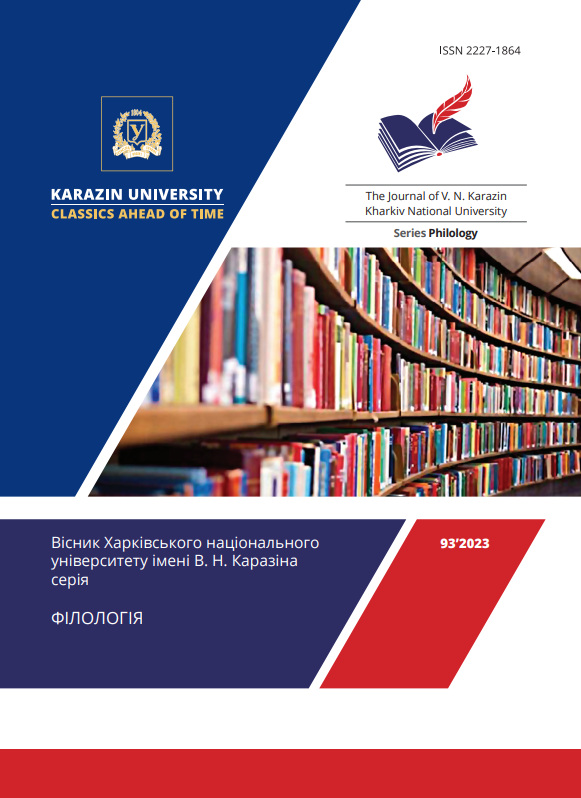The associative field of the concept “enemy” in modern Russian linguistic consciousness
Abstract
The purpose of this study is to reveal the structure of the associative field of the ENEMY concept in the Russian linguistic consciousness and to find out the factors causing its transformation. The object of the study is the results of associative experiments presented in the "Slavic Associative Dictionary" and in the "Russian Regional Associative Database. 2008-2015". The subject of the study is the basic cognitive features that form the associative-verbal model of the concept "enemy" in the modern linguistic consciousness of Russians.
The results of the comparative analysis of the researched associative fields in general testify to the stability of the associative-verbal model of the concept of ENEMY in the Russian linguistic consciousness of the first decades of the 21st century. The list of high-frequency reactions to the stimulus of враг is mostly unchanged (друг, недруг, враг народа, злой, мой, ненависть, etc.). The enemy's qualitative, action and acting characteristics, as well as his emotional and general negative assessment, remain stable. The connection between the concepts ENEMY and WAR is relevant.
However, the circle of reactions that point to the subject of enmity changes: next to the topic of Germany (немец, Гитлер, Германия, фашизм), the reactions of Америка, США, Запад are noted. Reactions нации, страны, государства appear among the names of the objects targeted by enmity. Reactions indicating the location of the enemy express the idea of his proximity, which is associated with a sense of danger and threat.
The appearance of such reactions indicates the gradual actualization in the Russian linguistic consciousness of the image of an external enemy, which can be associated not only with people of other nationalities, but also with individual states or their associations. Such changes are obviously caused by extralinguistic factors, in particular, the strengthening of political tensions on the part of Russia in the early 2000s against neighboring states and Western countries, which was accompanied by the active formation of the image of an external enemy in the Russian media space. The transformation of the associative field of the ENEMY concept in Russian linguistic culture demonstrates socio-cultural conditioning, discursiveness and dynamism of language consciousness.
Downloads
References
Vakalova, A. E., Novitskaya, I. V. (2018) Associative-verbal model of the concept “enemy” in the linguistic consciousness of a speaker of Russian linguistic culture. Juvenis Scientia. No. 4. 26–29. [in Russian].
Karaulov, Yu. N. (2000) Indicators of national mentality in the associative-verbal network. Language consciousness and the image of the world. Moscow. 191–206. [in Russian].
Kirilyuk, O. (2020) Linguistic means of creating an image of the enemy in the conditions of information warfare. Scientific Notes. Vol. 187. Series: Philological sciences. Kropyvnytskyi: "KOD" Publishing House. 45–50. [in Ukrainian].
Kyrychenko, V. V. (2015) Psychology of the image of the enemy in mass consciousness. "Philosophy, religion and culture in a globalized world": All-Ukrainian scientific and theoretical conference with international participation, November 23, 2015. Zhytomyr: Publisher O. O. Yevynok. 69–74. [in Ukrainian].
Kondratenko, N. V. (2017) Verbalization of the ENEMY concept in the Ukrainian political discourse. Philological studies: Scientific Bulletin of the Kryvyi Rih State Pedagogical University, Vol. 16. 358–366. [in Ukrainian].
Masenko, L. (2017) The language of Soviet totalitarianism. Kyiv: Clio. [in Ukrainian].
Oleksienko, S., Herman L. (2017) Enmity and the image of the enemy in modern psychology. Bulletin of the National Academy of the State Border Service of Ukraine. Series: Psychology,. Vol. 1. [in Ukrainian].
Pocheptsov, G. (2018) Propaganda 2.0. Kharkov: Folio. [in Russian].
Russian regional associative database (2008–2015) (compiled by I. V. Shaposhnikova, A. A. Romanenko). Retrieved from http://adictru.nsu.ru [in Russian].
Slavic associative dictionary: Russian, Belarusian, Bulgarian, Ukrainian (2004) / Comp. N. V. Ufimtseva, G. A. Cherkasova, Yu. N. Karaulov, E. F. Tarasov. Moscow..
Fedoriv, U . (2016) The image of the enemy as a modeling figure of the socialist realist text. Scientific Bulletin of Uzhhorod University. Series: Philology. Vol. 2 (36). 257–261. [in Russian].
Khoruzhenko, V. A. (2010) Concepts “WAR” and “ENEMY” in modern Russian-language journalism. Abstract of the dissertation for the degree of candidate of philological sciences. Specialty: 01/10/10 – Journalism. Moscow. [in Russian].




